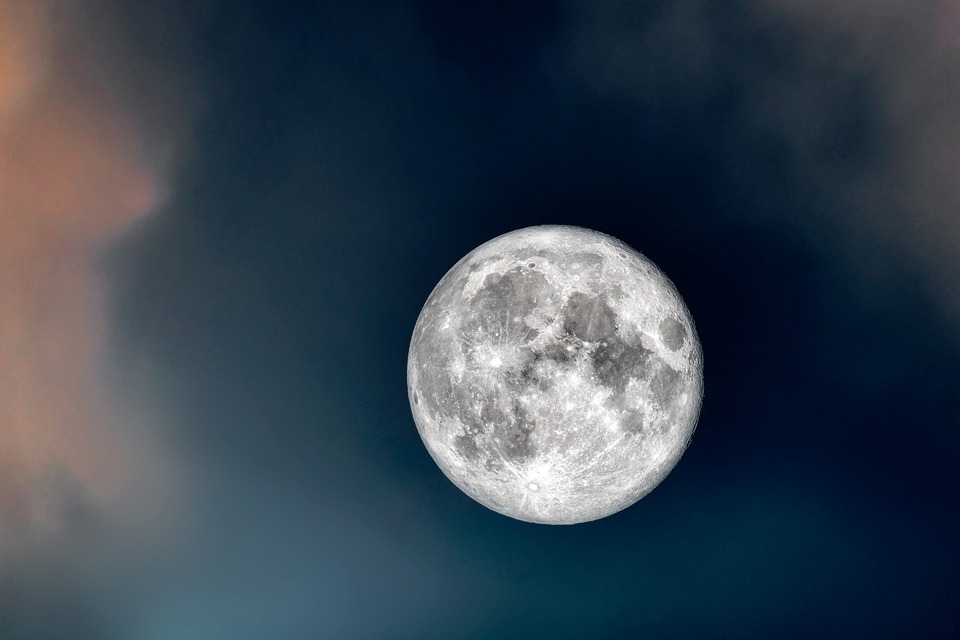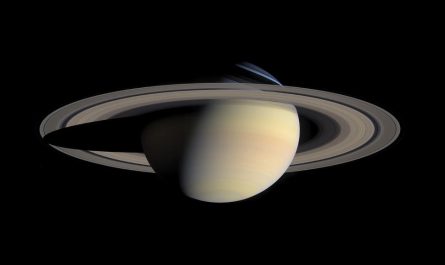Humans have always looked to the moon as a source of fascination and inspiration. For centuries, it’s influenced everything from ancient myths and legends to modern science and engineering. But despite decades of research and exploration, the moon continues to hold many secrets that we have yet to uncover. Beyond its beauty, the moon plays a significant ole in our planet’s dynamics and holds a place of cultural significance across the world. From its formation and phases to the mysteries that still baffle astronomers, here are some facts about the moon to help you see Earth’s closest celestial neighbor in a brand-new light!
10 Moon Facts
1. The Moon always shows Earth the same face. (source)
Our first moon fact is about the dark side of the moon—or rather, why it exists at all! Due to gravitational forces between the Earth and the moon, the moon is tidally locked with Earth. This means that the rate of its revolution (the amount of time it takes to complete one orbit around the Earth) is synchronized with the rate at which it spins. As a result, no matter where or when, if you’re on Earth, you’re always going to see the same side of the moon.
2. The Moon is drifting away from Earth. (source)
While the moon may be a constant for life here on Earth, it turns out that it’s slowly moving away from us at a rate of roughly 1.5 inches a year, which is approximately the rate at which fingernails grow. Like Earth, the moon has its own gravitational field, and the push and pull they each exert on one another is slowly pushing the moon further and further away. However, it would take billions of years for the moon to retreat entirely out of orbit with Earth, and scientists believe that our sun would have grown to consume our home world by then.
3. There is water on the Moon. (source)
Until the mid-2000s, a commonly believed fact about the moon was that it was completely dry. However, in 2008, the Apollo lunar rover collected samples that contained water. The jury is still out on whether the water was brought to the moon’s surface via solar wind, cometary impacts, or even formed with the water on it.
4. The Moon’s phases depend on its position. (source)
While the moon’s telltale glow has inspired countless poets throughout history, it turns out the moon’s surface is actually quite dark. Instead, it’s the sun’s reflection off of the moon’s surface which makes it appear illuminated. In fact, this same phenomenon is responsible for the phases of the moon. As the moon completes its 27.3 day rotation around the Earth, sunlight is able to reflect off different parts of the moon. For example, during a new moon, the “wrong side” of the moon is being illuminated by the sun. During a full moon, the moon face that is visible from Earth is receiving the entirety of the sun’s rays directly to its surface.
5. Earth’s tides are caused by the Moon. (source)
Did you know that the moon’s gravitational pull is the primary force behind Earth’s tides? This gravitational attraction causes the water in the oceans to bulge out on the side of Earth closest to the moon, creating a high tide. Another high tide occurs on the opposite side of Earth due to inertia. As Earth rotates, these bulges move around the planet, resulting in two high tides and two low tides each day. The sun also affects tides, but despite its significantly larger size, its influence is less than that of the moon due to the moon’s proximity to Earth.
6. The Moon smells. (source)
Common lore may speculate the moon is made of cheese, and according to those who have been there, it does, in fact, have a funk. When the first astronauts set foot on the moon, they were surprised to find after returning that their space suits carried an odor. The odor, which was similar to gun powder, was caused by moon dust particles on the astronauts’ suits. We don’t entirely know what causes the smell, though one theory posits that when moist spacecraft air mixes with the molecules in the lunar air, it produces the strange odor. Another theory is that moon dust oxidizes when exposed to human atmosphere.
7. Moon was formed by a planetary object’s collision with Earth. (source)
An interesting fact about the moon is that it was very likely formed from bits of the Earth itself. Current research of Earth material and lunar rocks lends credence to the Giant Impact Hypothesis. This theory suggests that, approximately 4.5 billion years ago, there was a colossal collision between the early Earth and a Mars-sized body named Theia. This impact ejected a significant amount of material into Earth’s orbit, which eventually joined together to form the moon.
8. It experiences dramatic temperature changes. (source)
With the fact that the moon has no significant atmosphere of its own, it’s no surprise that its temperature fluctuates dramatically depending on whether or not it’s getting hit with the sun’s rays. At the equator and mid latitudes, temperatures on the lunar surface can soar to around 106 degrees Celsius (224 degrees Fahrenheit) during the day when the sun is shining directly on it. Conversely, temperatures can plummet to about -183 degrees Celsius (-298 degrees Fahrenheit) at night.
9. The Moon is bigger than Pluto. (source)
While Pluto’s status as a planet has been inconsistent at best, our next fun fact about the moon doesn’t tip the scales in the smallest planet’s favor. It turns out Pluto is only about 2/3 the size of Earth’s moon. In fact, Pluto is smaller than several of the moons that orbit planets in our solar system!
10. Neil Armstrong’s footprints are still intact. (source)
The picture of Neil Armstrong’s footprint on the lunar surface is an iconic image symbolizing space exploration and human achievement. But did you know, the iconic footprints are still intact? Because the moon lacks a sufficient atmosphere, there isn’t much by way of wind and water to erode the footprints. While some scientists think that solar wind, solar flares, seismic events, and cometary collisions may erase some of the evidence of human disturbances to the moon’s surface, there’s reason to believe that the footprints will last for millions of years.




